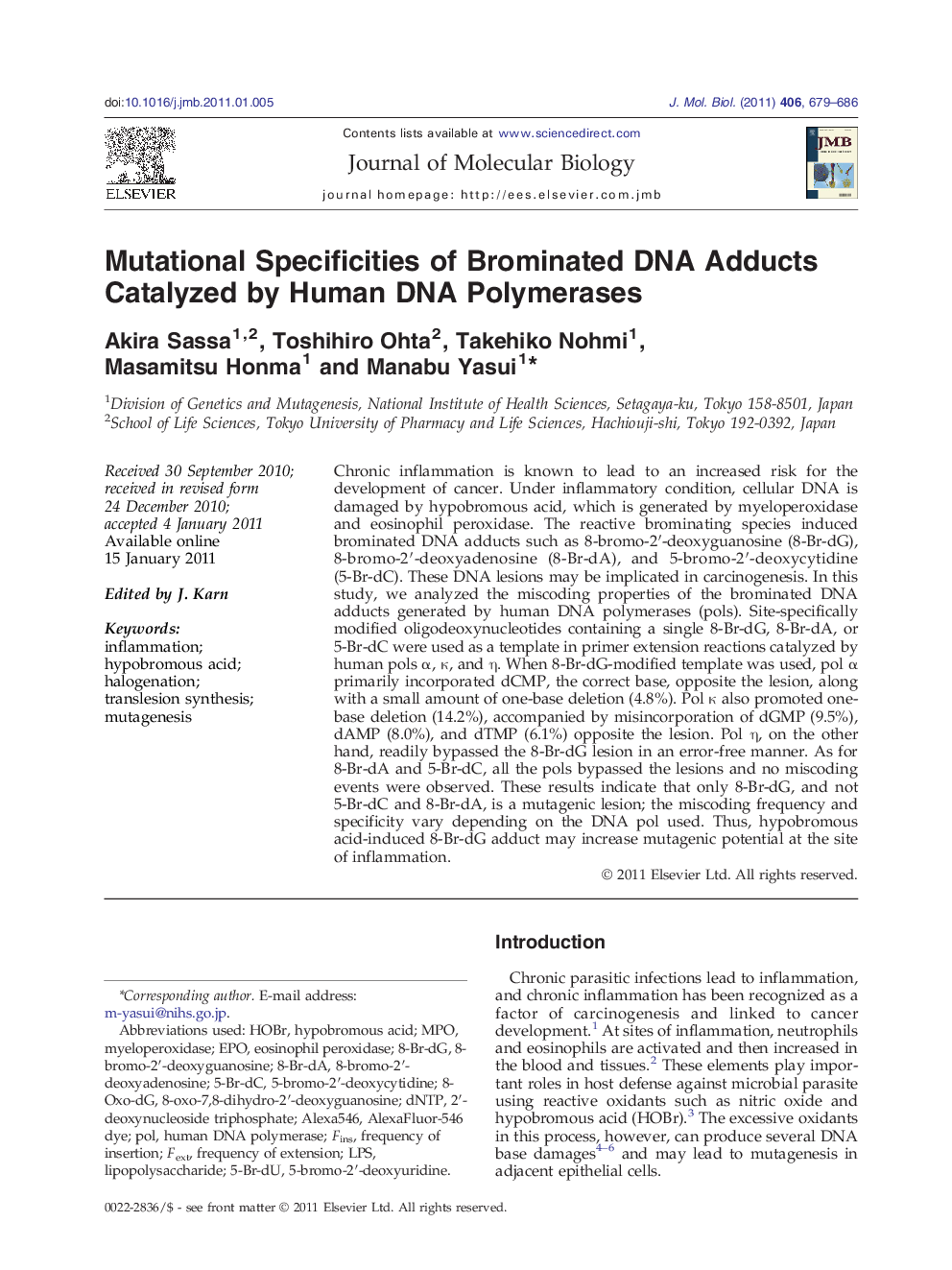| کد مقاله | کد نشریه | سال انتشار | مقاله انگلیسی | نسخه تمام متن |
|---|---|---|---|---|
| 2185688 | 1096002 | 2011 | 8 صفحه PDF | دانلود رایگان |

Chronic inflammation is known to lead to an increased risk for the development of cancer. Under inflammatory condition, cellular DNA is damaged by hypobromous acid, which is generated by myeloperoxidase and eosinophil peroxidase. The reactive brominating species induced brominated DNA adducts such as 8-bromo-2′-deoxyguanosine (8-Br-dG), 8-bromo-2′-deoxyadenosine (8-Br-dA), and 5-bromo-2′-deoxycytidine (5-Br-dC). These DNA lesions may be implicated in carcinogenesis. In this study, we analyzed the miscoding properties of the brominated DNA adducts generated by human DNA polymerases (pols). Site-specifically modified oligodeoxynucleotides containing a single 8-Br-dG, 8-Br-dA, or 5-Br-dC were used as a template in primer extension reactions catalyzed by human pols α, κ, and η. When 8-Br-dG-modified template was used, pol α primarily incorporated dCMP, the correct base, opposite the lesion, along with a small amount of one-base deletion (4.8%). Pol κ also promoted one-base deletion (14.2%), accompanied by misincorporation of dGMP (9.5%), dAMP (8.0%), and dTMP (6.1%) opposite the lesion. Pol η, on the other hand, readily bypassed the 8-Br-dG lesion in an error-free manner. As for 8-Br-dA and 5-Br-dC, all the pols bypassed the lesions and no miscoding events were observed. These results indicate that only 8-Br-dG, and not 5-Br-dC and 8-Br-dA, is a mutagenic lesion; the miscoding frequency and specificity vary depending on the DNA pol used. Thus, hypobromous acid-induced 8-Br-dG adduct may increase mutagenic potential at the site of inflammation.
Graphical AbstractFigure optionsDownload high-quality image (128 K)Download as PowerPoint slideResearch Highlights
► Brominated DNA adducts, 8-Br-dG, 8-Br-dA, and 5-Br-dC, may contribute to inflammation-induced carcinogenesis.
► We analyzed the miscoding properties of 8-Br-dG, 8-Br-dA, and 5-Br-dC generated by human DNA polymerases.
► Only 8-Br-dG, and not 8-Br-dA and 5-Br-dC, is a mutagenic lesion; the miscoding frequency and specificity vary depending on the DNA polymerase used.
► Thus, 8-Br-dG adducts may increase mutagenic potential at the site of inflammation.
Journal: Journal of Molecular Biology - Volume 406, Issue 5, 11 March 2011, Pages 679–686